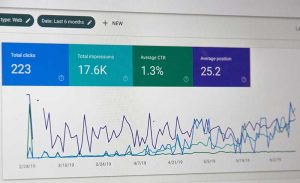Understanding SEO and improving your rankings and visitors

SEO, or Search Engine Optimization, is a critical aspect of online marketing that focuses on improving a website’s visibility in search engine results pages (SERPs). Implementing effective SEO strategies can significantly increase your website’s traffic, enhance your brand’s visibility, and drive more conversions.
This comprehensive article explores various SEO strategies that can help improve your rankings on Google, covering foundational elements, content optimization, technical SEO, and off-page tactics.
Understand Google’s Algorithm
Google’s algorithm uses over 200 factors to rank websites. While Google keeps the exact formula a secret, SEO experts have identified several key factors, including relevant content, user experience (UX), page speed, mobile-friendliness, and quality backlinks. Staying updated with Google’s algorithm updates is crucial, as what worked yesterday may not work today.
Understanding Google’s algorithm is fundamental for anyone looking to improve their website’s search engine rankings. Google’s algorithm is a complex system used to retrieve data from its search index and instantly deliver the best possible results for a query. The algorithm considers various factors, including the relevance of webpages, the quality of content, the usability of websites, and the user’s location and settings. Below, we delve deeper into how Google’s algorithm works and key factors that influence search rankings.
Core Principles of Google’s Algorithm
Relevance
Google aims to provide the most relevant results based on the user’s query. It analyses content, evaluates keywords, and considers the context of search queries to present the most relevant webpages.
Quality of Content
High-quality, informative, and useful content is prioritized. Google evaluates content quality through various signals, including the use of authoritative sources, the depth of content, and the freshness of content.
User Experience (UX)
Websites that offer a good user experience, such as fast loading times, mobile-friendliness, and intuitive navigation, are more likely to rank higher. Google’s Page Experience update emphasizes UX factors, including Core Web Vitals, as ranking signals.
Backlinks
Google views links from other reputable websites as votes of confidence. The more high-quality backlinks a website has, the more authoritative it is considered, which can positively impact rankings.
User Behaviour
Signals such as click-through rate (CTR), bounce rate, and dwell time help Google understand user satisfaction with search results, influencing rankings.

Personalization
Google personalizes search results based on the user’s search history, location, and settings to provide more relevant results.
Important Algorithm Updates
Google continuously updates its algorithm to improve search quality and user experience. Some of the most significant updates include:
Panda (2011): Targeted low-quality content, such as thin content, content farms, and sites with high ad-to-content ratios.
Penguin (2012): Aimed to penalize sites engaging in manipulative link schemes and keyword stuffing.
Hummingbird (2013): Focused on understanding the context and intent behind a search query, rather than just matching keywords.
Mobilegeddon (2015): Prioritized mobile-friendly websites in mobile search results.
RankBrain (2015): Introduced machine learning into the algorithm, helping Google understand the nuances of search queries and the relevance of content.
BERT (2019): Improved understanding of natural language in search queries, particularly for conversational and specific questions.
Core Web Vitals (2021): Integrated user experience signals, including loading performance, interactivity, and visual stability, into ranking criteria.
Product Review (2022): Product review update to identify high quality product reviews.
Helpful Content Update (2022) Aimed to reward people first content and devalue content written primarily for SEO.
How-to and FAQ Changes (2023): How-to and FAQ structured data reduced in some situations, however FAQ results on desktop not affected.
Strategies for Adapting to Google’s Algorithm
Focus on Quality Content: Create comprehensive, authoritative, and user-focused content.
Optimize for UX: Ensure your site is fast, mobile-friendly, and easy to navigate.
Build Quality Backlinks: Engage in ethical link-building practices to acquire links from reputable sites.
Stay Informed: Keep up with Google’s algorithm updates and SEO best practices.
Use Analytics: Monitor your site’s performance and adjust your strategies based on data. This includes Google Search console.
Understanding Google’s algorithm requires recognizing that it’s designed to prioritize high-quality, relevant content that provides a great user experience. While the specifics of the algorithm are complex and constantly evolving, focusing on these core principles can help improve your search rankings.
Keyword Research
Identify the keywords that your target audience uses to search for your products or services. Tools like Google Keyword Planner, Ahrefs, and SEMrush can help you find keywords related to your business.
Focus on long-tail keywords, which are less competitive and more specific, making them easier to rank for.
Optimize for On-Page SEO
On-page SEO involves optimizing individual web pages to rank higher and earn more relevant traffic. Key elements include:
Title Tags and Meta Descriptions
Incorporate targeted keywords in a way that is natural and engaging.
Header Tags (H1, H2, H3)
Use these to structure content and highlight key points.
URL Structure
Ensure URLs are short and descriptive and include keywords you want to rank for.
Alt Text for Images
Helps Google understand the content of your images, Google can’t read images.
Produce High-Quality Content
Content is king in SEO. High-quality, valuable content tailored to your target audience can drive significant traffic to your site. Blog posts, infographics, videos, and other forms of content should be informative, engaging, and optimized for the keywords you want to target.
Enhance User Experience (UX)
Google values websites that provide a great user experience. This includes fast loading times, a mobile-friendly design, intuitive navigation, and engaging visuals. Use Google’s PageSpeed Insights and Mobile-Friendly Test to analyse and improve your site’s performance.
Build Quality Backlinks
Backlinks are links from other websites to yours and are a major ranking factor for Google. Focus on earning high-quality backlinks from reputable sites in your industry. Techniques include guest blogging, creating shareable content, and participating in industry forums and discussions.
Utilize Social Media
While social signals are not a direct ranking factor for Google, social media can enhance your SEO efforts by increasing visibility and traffic to your content. Share your content on social media platforms and engage with your audience to drive more traffic to your site.
Implement Technical SEO
Technical SEO involves optimizing your website’s technical aspects to improve its visibility in search results. Key practices include:
Secure your site with HTTPS
Google gives a slight ranking boost to secure websites.
Create an XML Sitemap
Helps search engines better index your site.
Use Schema Markup
Helps Google understand the content of your pages.
Improve Site Speed
Optimize images, leverage browser caching, and reduce server response time.
Web Hosting
Google likes websites to be fast, so as well as onsite factors, having a fast and reliable server can play a part in your rankings. You want to ensure your First Contentful Paint, Largest Contentful Paint and Total blocking time are low. This will help your SEO.
Monitor Your Progress
Use tools like Google Analytics and Google Search Console to monitor your site’s performance in search results. These tools can help you understand how users find and interact with your site, enabling you to make data-driven improvements.
Stay Updated and Be Patient
SEO is an ongoing process. Stay informed about the latest SEO trends and algorithm updates. Implementing SEO strategies requires patience, as significant improvements in rankings can take time.
By following these comprehensive SEO strategies, you can improve your website’s visibility on Google, attract more traffic, and enhance your online presence. Remember, SEO is not a one-time task but a continuous effort to maintain and improve your site’s ranking in search results.
